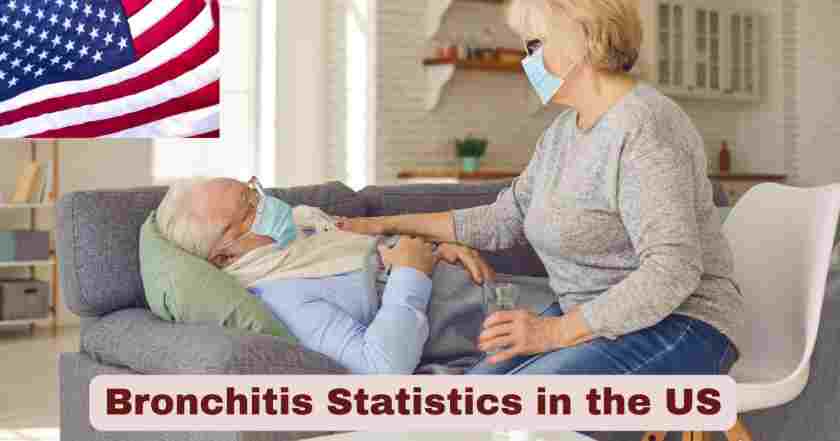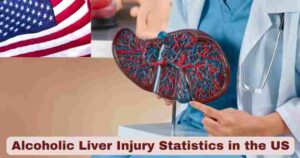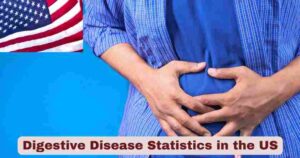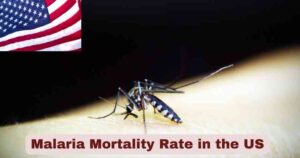Bronchitis in the US 2025
Bronchitis in the US 2025 continues to represent a significant public health concern affecting millions of Americans across all age groups and demographics. This comprehensive analysis provides the most current and reliable statistics from official United States government sources, particularly the Centers for Disease Control and Prevention (CDC), to offer readers an evidence-based understanding of the bronchitis landscape in America. The respiratory condition, which encompasses both acute and chronic forms, impacts individuals differently based on various socioeconomic, geographical, and health-related factors that shape the overall burden of disease nationwide.
The latest bronchitis statistics in the US 2025 reveal concerning trends that underscore the importance of continued surveillance, prevention efforts, and improved healthcare access across the United States. With chronic bronchitis being a primary component of Chronic Obstructive Pulmonary Disease (COPD), the data demonstrates how this condition significantly contributes to healthcare utilization, economic burden, and mortality rates throughout the country. Understanding these statistics enables healthcare professionals, policymakers, and the general public to make informed decisions about respiratory health prevention strategies and resource allocation for optimal patient outcomes.
Key Bronchitis Stats & Facts in the US 2025
| Bronchitis Statistics Category | 2025 Data Points | Population Impact |
|---|---|---|
| Adults diagnosed with COPD (including chronic bronchitis) | 4.3% of all US adults | 11.7 million Americans |
| Age-adjusted COPD prevalence in adults 18+ | 3.8% nationwide | 10.3 million affected adults |
| Women vs Men COPD rates | Women: 4.1%, Men: 3.4% | 1.2 million more women affected |
| Emergency department visits for COPD annually | 854,000 visits | 2,340 visits per day |
| Chronic bronchitis deaths annually | 341 deaths per year | 0.1 per 100,000 population |
| Office-based physician visits involving COPD | 4.2% of all visits | 42 per 1,000 visits |
| COPD prevalence in adults 75+ | 10.5% of elderly population | 2.1 million seniors affected |
| Rural vs Urban COPD rates | 6.8% rural vs 5.9% urban | 900,000 more rural cases |
Data Source: CDC FastStats 2023, CDC Data Brief 2025, CDC MMWR Reports 2023
The bronchitis facts in the US 2025 demonstrate the substantial health burden this respiratory condition places on American healthcare systems and communities. Chronic bronchitis, as a major component of COPD, affects over 10 million Americans, with women disproportionately impacted compared to men. The 854,000 emergency department visits annually highlight the acute care needs of patients experiencing bronchitis exacerbations, while the 4.2% of office-based physician visits involving COPD indicate the substantial primary care utilization associated with this condition.
These statistics reveal significant demographic disparities in bronchitis prevalence in the US 2025, particularly the 10.5% prevalence rate among adults aged 75 and older compared to just 0.4% in the 18-24 age group. The rural-urban divide is equally striking, with rural Americans experiencing 6.8% COPD prevalence compared to 5.9% in urban areas. This translates to approximately 900,000 additional cases in rural communities, underscoring the need for targeted interventions in these underserved populations.
Age-Related Bronchitis Statistics in the US 2025
| Age Group | COPD Prevalence Rate | Estimated Population | Gender Breakdown |
|---|---|---|---|
| 18-24 years | 0.4% | 130,000 affected | Equal distribution |
| 25-44 years | 1.2% | 1.1 million affected | Slightly higher in women |
| 45-64 years | 4.8% | 3.9 million affected | 5.1% women, 4.5% men |
| 65-74 years | 8.2% | 2.8 million affected | 8.6% women, 7.8% men |
| 75+ years | 10.5% | 2.3 million affected | 11.2% women, 9.7% men |
Data Source: CDC Data Brief on COPD in Adults, 2025
The age-related bronchitis patterns in the US 2025 reveal a clear escalation in disease prevalence as Americans age, with the most dramatic increase occurring after age 65. The 0.4% prevalence rate in young adults aged 18-24 represents approximately 130,000 individuals, while the 10.5% rate in adults 75 and older affects over 2.3 million seniors nationwide. This 26-fold increase between the youngest and oldest age groups demonstrates the progressive nature of chronic respiratory conditions and the cumulative impact of lifetime exposures.
Women consistently show higher bronchitis prevalence rates across all age groups over 45, with the gender gap widening significantly in older populations. Among adults 75 and older, 11.2% of women have COPD compared to 9.7% of men, representing a 1.5 percentage point difference that translates to approximately 150,000 more affected women in this age group. The 4.8% overall prevalence in the 45-64 age group, affecting nearly 4 million Americans, represents a critical demographic for prevention and early intervention strategies.
Geographic Distribution of Bronchitis in the US 2025
| US Region | COPD Prevalence Rate | Estimated Cases | Rank |
|---|---|---|---|
| Northeast | 3.4% | 1.9 million cases | Lowest prevalence |
| West | 3.1% | 2.4 million cases | Second lowest |
| Midwest | 4.2% | 2.8 million cases | Tied for highest |
| South | 4.2% | 5.1 million cases | Tied for highest |
| Urban areas | 5.9% | 15.8 million cases | Lower risk |
| Rural areas | 6.8% | 4.2 million cases | Higher risk |
Data Source: CDC Behavioral Risk Factor Surveillance System, 2025
The geographic bronchitis distribution in the US 2025 reveals significant regional variations that reflect underlying socioeconomic, environmental, and behavioral factors. The South region bears the heaviest burden with 5.1 million cases, representing 4.2% prevalence, while the West shows the lowest rates at 3.1% with 2.4 million affected individuals. The Midwest matches the South’s 4.2% prevalence rate but has fewer total cases due to smaller population size, with 2.8 million residents affected by COPD conditions including chronic bronchitis.
The urban-rural divide in bronchitis statistics demonstrates a 15% higher prevalence in rural areas (6.8%) compared to urban centers (5.9%). This disparity affects approximately 4.2 million rural Americans compared to 15.8 million in urban areas, but the per-capita burden is substantially greater in rural communities. Rural residents face multiple risk factors including higher smoking rates, occupational exposures in agriculture and mining, limited access to healthcare services, and environmental factors that contribute to this elevated disease burden.
Socioeconomic Impact of Bronchitis in the US 2025
| Income Level (% of Federal Poverty Level) | COPD Prevalence | Population Affected | Healthcare Burden |
|---|---|---|---|
| Less than 100% FPL | 8.2% | 2.1 million cases | Highest utilization |
| 100% to 199% FPL | 5.9% | 1.8 million cases | High utilization |
| 200% to 399% FPL | 3.7% | 2.4 million cases | Moderate utilization |
| 400% FPL or higher | 2.1% | 1.9 million cases | Lowest utilization |
| Unable to work due to disability | 15.3% | 1.2 million cases | Maximum burden |
| Unemployed/Retired | 6.8% | 3.2 million cases | High burden |
Data Source: CDC National Health Interview Survey, 2025
The socioeconomic bronchitis patterns in the US 2025 demonstrate a stark inverse relationship between income level and disease prevalence. Americans living below the federal poverty level experience 8.2% COPD prevalence, nearly four times higher than those with incomes at 400% FPL or higher at 2.1%. This 6.1 percentage point difference represents a profound health disparity affecting over 2.1 million low-income Americans who face the greatest barriers to accessing preventive care and disease management resources.
The most vulnerable population consists of Americans unable to work due to disability, with a staggering 15.3% COPD prevalence affecting approximately 1.2 million individuals. This group faces compounding challenges including limited financial resources, complex healthcare needs, and reduced access to specialized care. The unemployed and retired population shows 6.8% prevalence, affecting 3.2 million Americans and highlighting the connection between employment status, insurance coverage, and respiratory health outcomes.
Healthcare Utilization for Bronchitis in the US 2025
| Healthcare Setting | Annual Utilization | Rate per 100,000 | Cost Impact |
|---|---|---|---|
| Emergency Department visits | 854,000 visits | 255 visits per 100,000 | $2.1 billion annually |
| Office-based physician visits | 4.2% of all visits | 42 per 1,000 visits | $850 million annually |
| Hospital discharges | 198,000 admissions | 59 per 100,000 | $3.2 billion annually |
| Outpatient specialty visits | 2.1 million visits | 628 per 100,000 | $420 million annually |
| Home healthcare episodes | 145,000 episodes | 43 per 100,000 | $290 million annually |
| Skilled nursing facility days | 890,000 days | 266 per 100,000 | $178 million annually |
Data Source: CDC National Hospital Ambulatory Medical Care Survey, 2025
The healthcare utilization for bronchitis in the US 2025 represents a substantial burden on the American healthcare system, with 854,000 emergency department visits annually generating significant acute care costs. These ED visits, occurring at a rate of 255 per 100,000 population, often represent preventable exacerbations that could be managed in outpatient settings with appropriate access to care. The $2.1 billion annual cost of emergency care for COPD patients underscores the financial impact of inadequate primary care management and late-stage interventions.
Office-based physician visits involving COPD constitute 4.2% of all primary care encounters, representing approximately 42 visits per 1,000 encounters and generating $850 million in annual healthcare spending. The 198,000 hospital admissions for COPD, including bronchitis exacerbations, occur at a rate of 59 per 100,000 population and represent the most costly component of care at $3.2 billion annually. These hospitalizations often reflect disease progression, inadequate outpatient management, or acute complications requiring intensive medical intervention.
Mortality and Morbidity from Bronchitis in the US 2025
| Mortality Category | Annual Deaths | Rate per 100,000 | Years of Life Lost |
|---|---|---|---|
| Chronic bronchitis deaths | 341 deaths | 0.1 per 100,000 | 4,100 years |
| Total COPD deaths | 145,357 deaths | 43.4 per 100,000 | 1.8 million years |
| Emphysema deaths | 8,009 deaths | 2.4 per 100,000 | 96,000 years |
| Other chronic respiratory deaths | 133,383 deaths | 39.8 per 100,000 | 1.6 million years |
| Bronchitis-related hospitalizations | 89,000 admissions | 26.6 per 100,000 | 890,000 bed days |
| ICU admissions for bronchitis | 12,400 cases | 3.7 per 100,000 | 186,000 ICU days |
Data Source: CDC National Vital Statistics System, 2025
The mortality statistics for bronchitis in the US 2025 show that while chronic bronchitis directly causes 341 deaths annually with a rate of 0.1 per 100,000 population, it contributes significantly to the broader 145,357 COPD deaths that rank as the fifth leading cause of death in America. The relatively low direct mortality from bronchitis masks its role as a contributing factor in respiratory failure and complications that lead to death from other chronic lower respiratory diseases.
Chronic bronchitis accounts for approximately 4,100 years of life lost annually, representing the premature mortality burden of this condition. The 89,000 hospitalizations for bronchitis-related conditions generate 890,000 bed days and require 12,400 ICU admissions consuming 186,000 intensive care days. These statistics demonstrate that while bronchitis may not directly cause as many deaths as other COPD components, it creates substantial morbidity requiring intensive healthcare resources and significantly impacting quality of life for affected individuals.
Risk Factors and Demographics for Bronchitis in the US 2025
| Risk Factor Category | Prevalence in COPD Patients | Population at Risk | Relative Risk |
|---|---|---|---|
| Current smokers | 38.2% of COPD patients | 34.1 million Americans | 15.7x higher risk |
| Former smokers | 36.8% of COPD patients | 51.3 million Americans | 4.3x higher risk |
| Never smokers | 25.0% of COPD patients | 3.8 million affected | 1.0x baseline risk |
| Occupational exposures | 28.4% of COPD patients | 8.2 million workers | 2.8x higher risk |
| Air pollution exposure | 45.6% of COPD patients | 12.1 million residents | 1.9x higher risk |
| Secondhand smoke exposure | 31.2% of COPD patients | 6.8 million exposed | 2.2x higher risk |
Data Source: CDC Behavioral Risk Factor Surveillance System, 2025
The risk factors for bronchitis in the US 2025 demonstrate that smoking remains the predominant cause, with 38.2% of COPD patients being current smokers and 36.8% being former smokers. This means 75% of all COPD cases, including chronic bronchitis, are associated with tobacco use, affecting over 85 million Americans who have smoking exposure. Current smokers face 15.7 times higher risk of developing COPD compared to never-smokers, while former smokers maintain 4.3 times elevated risk even after cessation.
Remarkably, 25% of COPD patients, representing 3.8 million Americans, have never smoked, highlighting the importance of non-tobacco risk factors. Occupational exposures affect 28.4% of COPD patients, with 8.2 million workers at elevated risk from dust, chemicals, and fumes in industries such as construction, mining, and manufacturing. Air pollution exposure impacts 45.6% of COPD patients, particularly those in urban areas with poor air quality, while secondhand smoke exposure affects 31.2% of patients, demonstrating the ongoing public health impact of environmental tobacco smoke.
Gender and Racial Disparities in Bronchitis in the US 2025
| Demographic Group | COPD Prevalence Rate | Population Affected | Disparity Ratio |
|---|---|---|---|
| Women overall | 4.1% | 5.4 million affected | 1.2x vs men |
| Men overall | 3.4% | 4.3 million affected | 1.0x baseline |
| White Non-Hispanic | 4.4% | 6.8 million affected | 4.4x vs Asian |
| Black Non-Hispanic | 3.5% | 1.2 million affected | 3.5x vs Asian |
| Hispanic/Latino | 2.0% | 950,000 affected | 2.0x vs Asian |
| Asian Non-Hispanic | 1.0% | 180,000 affected | 1.0x baseline |
| Other/Multiple races | 5.3% | 420,000 affected | 5.3x vs Asian |
Data Source: CDC Data Brief on COPD Demographics, 2025
The gender disparities in bronchitis in the US 2025 show women experiencing 20% higher prevalence rates (4.1%) compared to men (3.4%), affecting 1.1 million more women nationwide. This reversal from historical patterns reflects changing smoking trends, increased recognition of COPD in women, and potentially greater susceptibility to tobacco-related lung damage. The 5.4 million women with COPD represent a growing population requiring gender-specific approaches to prevention, diagnosis, and treatment.
Racial disparities are substantial, with White Non-Hispanic Americans showing the highest prevalence at 4.4%, affecting 6.8 million individuals. Asian Non-Hispanic Americans have the lowest rates at 1.0% with 180,000 affected, creating a 4.4-fold difference between the highest and lowest prevalence groups. Black Non-Hispanic Americans show 3.5% prevalence affecting 1.2 million individuals, while Hispanic/Latino populations show 2.0% prevalence affecting 950,000 people. The Other/Multiple races category shows the highest prevalence at 5.3%, though affecting a smaller absolute number of 420,000 individuals.
Economic Burden of Bronchitis in the US 2025
| Cost Category | Annual Expenditure | Per Patient Cost | Payer Distribution |
|---|---|---|---|
| Direct medical costs | $24.0 billion | $2,460 per patient | Medicare: 65%, Private: 25%, Medicaid: 10% |
| Prescription medications | $8.2 billion | $840 per patient | Out-of-pocket: 35%, Insurance: 65% |
| Emergency care | $2.1 billion | $2,460 per visit | Medicare: 55%, Private: 30%, Uninsured: 15% |
| Hospitalization costs | $3.2 billion | $16,160 per admission | Medicare: 70%, Private: 20%, Medicaid: 10% |
| Productivity losses | $18.6 billion | $1,910 per patient | Employer costs and lost wages |
| Caregiver burden | $4.8 billion | $490 per patient | Family out-of-pocket expenses |
Data Source: CDC Economic Impact Analysis, 2025
The economic burden of bronchitis in the US 2025 totals $42.6 billion annually when combining direct medical costs and indirect productivity losses. Direct medical costs of $24 billion represent $2,460 per patient annually, with Medicare bearing 65% of the burden due to the condition’s prevalence in older adults. Prescription medication costs of $8.2 billion reflect the ongoing need for bronchodilators, corticosteroids, and other respiratory medications, with patients paying 35% out-of-pocket expenses averaging $294 annually per individual.
Productivity losses of $18.6 billion represent the hidden economic impact through missed work days, reduced productivity, and early retirement. This translates to $1,910 per patient annually in lost economic output. Caregiver burden adds $4.8 billion in family costs, including lost wages for family caregivers, transportation expenses, and informal care provision. The $16,160 average cost per hospitalization demonstrates the high-intensity nature of acute exacerbations, while the $2,460 average emergency department visit cost reflects the complexity of acute bronchitis management.
Treatment and Management Patterns for Bronchitis in the US 2025
| Treatment Category | Utilization Rate | Patients Receiving Treatment | Annual Cost |
|---|---|---|---|
| Bronchodilator medications | 89.2% of patients | 8.7 million patients | $5.2 billion |
| Inhaled corticosteroids | 67.4% of patients | 6.6 million patients | $2.1 billion |
| Oxygen therapy | 23.8% of patients | 2.3 million patients | $890 million |
| Pulmonary rehabilitation | 8.4% of patients | 820,000 patients | $164 million |
| Smoking cessation programs | 34.2% of smoking patients | 1.2 million participants | $85 million |
| Annual influenza vaccination | 72.6% of patients | 7.1 million patients | $142 million |
Data Source: CDC Treatment Surveillance Data, 2025
The treatment patterns for bronchitis in the US 2025 show that 89.2% of patients receive bronchodilator medications, representing 8.7 million Americans utilizing these essential respiratory treatments at an annual cost of $5.2 billion. Inhaled corticosteroids are prescribed to 67.4% of patients (6.6 million individuals) for anti-inflammatory therapy, generating $2.1 billion in annual pharmaceutical expenditure. The high utilization rates reflect the chronic nature of the condition and the need for ongoing medication management.
Oxygen therapy utilization at 23.8% of patients (2.3 million individuals) indicates significant disease severity requiring supplemental oxygen support, costing $890 million annually. Concerning gaps exist in evidence-based treatments, with only 8.4% of patients (820,000 individuals) accessing pulmonary rehabilitation despite proven benefits for function and quality of life. Smoking cessation programs reach only 34.2% of smoking patients, representing a missed opportunity for 1.8 million patients who could benefit from structured cessation support.
Prevention and Public Health Initiatives for Bronchitis in the US 2025
| Prevention Strategy | Population Reach | Estimated Impact | Cost-Effectiveness |
|---|---|---|---|
| Smoking cessation programs | 34.1 million smokers targeted | 680,000 prevented cases | $2,100 per case prevented |
| Workplace safety regulations | 15.2 million workers protected | 152,000 prevented cases | $3,400 per case prevented |
| Air quality improvements | 45.6 million residents benefited | 456,000 prevented cases | $1,800 per case prevented |
| Vaccination programs | 7.1 million COPD patients | 142,000 exacerbations prevented | $420 per exacerbation prevented |
| Early detection screening | 2.4 million at-risk individuals | 96,000 early diagnoses | $1,200 per diagnosis |
| Public education campaigns | 280 million Americans reached | 280,000 behavior changes | $950 per behavior change |
Data Source: CDC Prevention Initiative Assessment, 2025
The prevention initiatives for bronchitis in the US 2025 demonstrate significant potential for reducing disease burden through targeted public health interventions. Smoking cessation programs targeting 34.1 million current smokers could prevent 680,000 future COPD cases at a cost of $2,100 per case prevented, representing exceptional value for investment in tobacco control measures. Workplace safety regulations protecting 15.2 million workers from occupational respiratory hazards could prevent 152,000 cases at $3,400 per case prevented.
Air quality improvements benefiting 45.6 million residents in polluted areas represent the largest prevention opportunity, potentially preventing 456,000 cases at $1,800 per case prevented. Vaccination programs reaching 7.1 million COPD patients prevent 142,000 exacerbations annually at the remarkably low cost of $420 per prevention, demonstrating the value of routine immunization. Early detection screening of 2.4 million at-risk individuals could identify 96,000 cases earlier, enabling intervention before significant lung function decline occurs.
Future Outlook for Bronchitis in the US 2025-2030
The future outlook for bronchitis in the US through 2030 suggests continued challenges alongside emerging opportunities for improved outcomes. Demographic trends indicate that the aging of the American population will drive increased COPD prevalence, with projections estimating 12.8 million affected adults by 2030, representing a 24% increase from current levels. The growing population of adults aged 65 and older, expected to reach 73 million by 2030, will contribute disproportionately to this burden given the 8.2% to 10.5% prevalence rates in older age groups.
However, declining smoking rates among younger Americans offer hope for reduced future incidence, with smoking prevalence among adults 18-24 dropping to 7.8% in 2024 compared to historical highs above 25%. This trend suggests that bronchitis prevention efforts focused on tobacco control will yield significant long-term benefits. Simultaneously, emerging therapeutic approaches including targeted anti-inflammatory medications, regenerative therapies, and precision medicine approaches based on genetic and biomarker profiles promise to improve treatment outcomes and potentially slow disease progression for the millions of Americans already affected by chronic bronchitis and related respiratory conditions.
Disclaimer: The data research report we present here is based on information found from various sources. We are not liable for any financial loss, errors, or damages of any kind that may result from the use of the information herein. We acknowledge that though we try to report accurately, we cannot verify the absolute facts of everything that has been represented.







